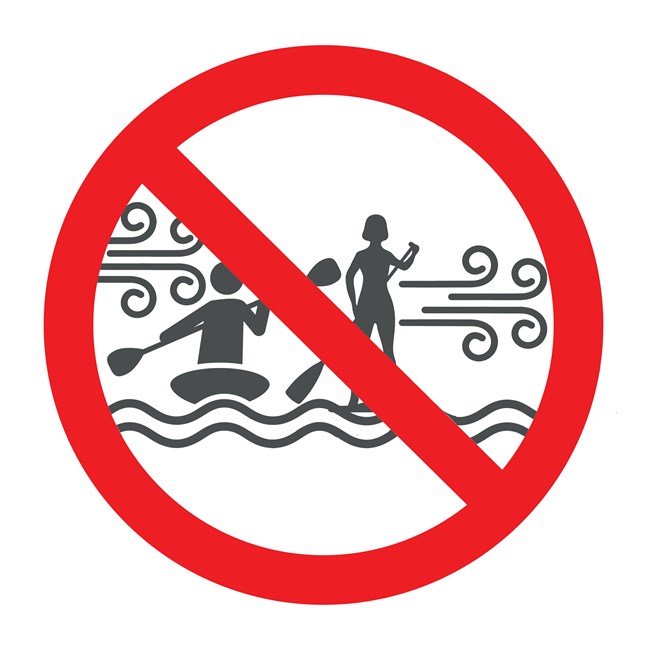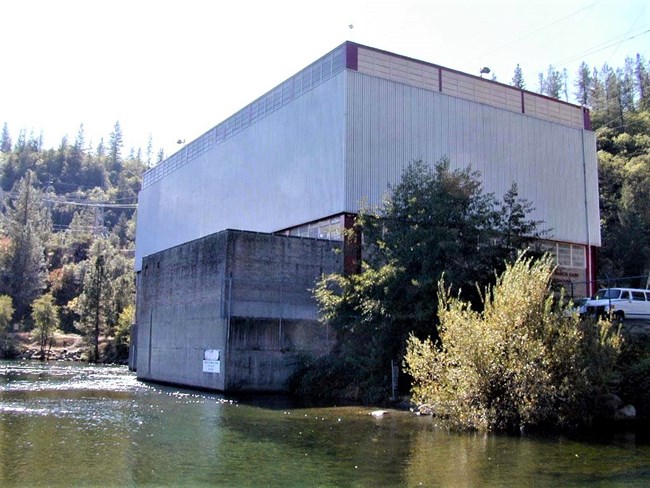
Water Safety at the ParkIf you see whitecaps on the lake, do not go kayaking or paddleboarding. These water sports are highly dangerous in windy conditions. Whiskeytown Lake is a fantastic place to spend the day, especially during the hot summer months when floating on the water is a great way to relax. However, a calm day on the water can quickly turn dangerous. Use these tips to plan like a ranger and ensure your day on the lake is safe and enjoyable. PFDs – Personal Floatation Devices (Lifejackets)Lifejackets save lives. U.S. Coast Guard regulations require a Personal Floatation Device (PFD) for every person on board any vessel, including kayaks, canoes, and paddleboards. California state law also mandates that children 12 and under must wear a lifejacket at all times while on board. Make sure your lifejacket fits snugly but is comfortable enough to wear throughout the day. Plan for the WeatherBefore heading out on the water, always check the weather forecast and the Whiskeytown Lake cam for wind conditions. If you see whitecaps on the lake, it is not safe to kayak or paddleboard. Summer temperatures often exceed 100°F (37°C), so water and sun protection are essential. Bring plenty of drinking water, stay hydrated, and take breaks in the shade. Sunscreen, a wide-brimmed hat, and a shady spot can help you avoid too much sun exposure. If it gets too hot, cool off by jumping into the lake or creek. Prepare for Windy ConditionsEven on sunny days, unexpected winds can cause dangerous conditions on the lake. Sudden winds have blown boaters off course or even stranded their boats entirely. Knowing your limits and respecting weather changes will keep you from needing rescue. Changing Lake LevelsWhiskeytown Lake’s water level changes throughout the year due to power generation, cold water conservation for native fish, flood control, and other factors. Summer and winter hazards on the lake vary, with the water level fluctuating by nearly 12 feet from April/May through October. Be aware of these changes and navigate carefully. 
NPS Boating Etiquette and Safety at WhiskeytownKnow Where to GoMost of Whiskeytown Lake is open to boaters, but there are important restrictions to keep in mind. The areas between Brandy Creek Beach, Brandy Creek Marina, and the islands, as well as Oak Bottom and the Whiskey Creek Arm, are designated no-wake zones. All hard-sided vessels are prohibited from entering the designated swim areas. Another key location to avoid is the buoyed-off area in front of Carr Powerhouse, where sudden releases of dangerously cold, fast-moving water make it unsafe for boating, swimming, or wading. For your safety, and the safety of your pets, keep them out of the water near Carr Powerhouse. Be Kind to Each OtherSummer mornings at Whiskeytown can get busy, with popular spots filling up quickly. For example, the smaller Whiskey Creek boat ramp often reaches capacity early, while the larger Brandy Creek Marina launch ramp usually has more space. If your preferred area is full, use the opportunity to explore and rediscover another part of Whiskeytown. Parking ConsiderationsPlease park only in designated parking areas for both vehicles and trailers. Parking outside of these areas creates hazards and can block roadways, making it difficult for large emergency vehicles to pass through safely. Be Prepared at the Boat RampBoat ramps are for everyone, so be courteous by launching quickly. The launch area can become backed up, so make sure you're ready to launch your vessel—whether it's a patio boat or a paddleboard—efficiently. While everyone may not be an experienced ramp user, it’s important to be patient and friendly. If you notice someone struggling, offer a hand! Keep in mind that boat ramps are not places to play—fishing and swimming are prohibited in these areas. These tips are meant to help ensure you have a fun, safe, and successful day on the water. The staff at Whiskeytown National Recreation Area is dedicated to providing you with a safe and enjoyable experience, so you can continue visiting and making memories for years to come. By Tyler Compton, Interpretive Park Ranger |
Last updated: October 4, 2024
